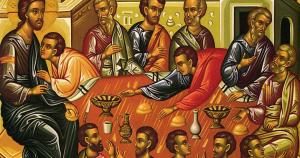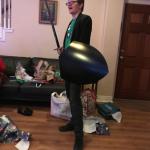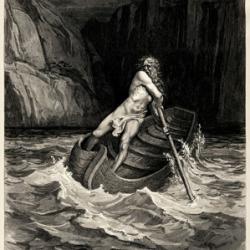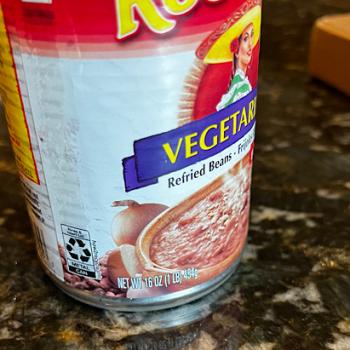 Hating ancient icons, deep truths, ends in ugly idols.
Hating ancient icons, deep truths, ends in ugly idols.
Jingoism is the idol that mocks patriotism. The uxorious defaces chivalry. The one who swears by jingo and focuses only on his family has missed the greater good, the deeper meaning of homeland and family circle. All lesser goods point to the good God. When we make more of the lesser, we miss God and ruin all. This mistake makes the icons into idols and idols are always destroyed.
Every earthly love is an icon pointing to the perfect, infinite love of God. This love is so varied that God has given us many images, many icons. We dare not tinker with any one of them as the hope of a beatific vision is at risk if we do!
An icon is an outer sign pointing to a greater, heavenly, reality. One venerates an icon not because of the wood, gold, or paint, that makes up the icon, but because the particular images, associations, point to a deeper truth, goodness, and beauty. When God made the Levites the priestly tribe, God did not give a competency test to Levi. There is no reason to think the sons of Levi would have been better at the tasks of the priesthood than the sons or daughters of Judah. The importance of the choice of Levi was in part that it was not based on merit!
Jesus was, after all, born of Judah.
The Levites are not better, smarter, faster at lamb sacrifice than the those from Judah. They are there in a role, the way an actor plays a part. In Shakespeare’s day, Beatrice was played by a male, but this ended as quickly as the law would allow. Beatrice is a woman and the icon should match as far as is possible. When Shakespeare was forced to portray women with men, the courts and the laws were bad. They made the icons false. They twisted the image of God and so bred depravity. Beatrice is a woman and the role always should have been played by a woman.
This is not because women are better than men. The sons of Levi were not better than the daughters of Levi. Surely, there would have been many daughters of Levi who could have worn the robes, done the tasks, said the lines. Why not? This would have been iconoclasm, defacing the image of God. Women are not fathers, men are not mothers. The role of the priest was not based on competency but nature.
God was setting up an image, an icon, in the Old Testament priesthood. In part, the priest represent the father, different in so many ways from the mother. The priesthood showed that not all roles are based on merit: some were merely a reflection of a reality. Fathers are not mothers. Children are not students: a parent does not teach her children after standardized testing to show them worthy. One gives out of love which is not merit based. Naturally if one gets the icon wrong, that does not stop the ability to perform tasks well. The son of Judah might offer the grain offering with a certain splendor, speak a good word, and make a good judgment.
He has still defaced the icon of God.
As Moses discovered, this is a bad idea:
7The LORD told Moses, 8“Take the rod, gather the community together, and then you and your brother Aaron are to speak to the rock right before their eyes. It will release water. As you bring water to them from the rock, the community and the cattle will be able to drink.” 9So Moses took the rod in the LORD’s presence, just as he had commanded.
10Then Moses and Aaron gathered the community together in front of the rock. “Pay attention, you rebels!” Moses told them. “Are we to bring you water from this rock?” 11Then Moses raised his hand and struck the rock twice with his rod. Lots of water gushed out, and both the community and their cattle were able to drink.
12But the LORD rebuked Moses and Aaron, telling Moses: “Because you botha didn’t believe me, because you didn’t consecrate me as holyb in the presencec of the Israelis, you won’t be the ones to bring this congregation into the land that I’m about to give them.” 13Because the Israelis argued with the LORD and he was set apart among them, this place was called the Meribah Springs.
‘Ware the iconoclast, smasher of stained glass, the super-villain of the divine image in humankind.












